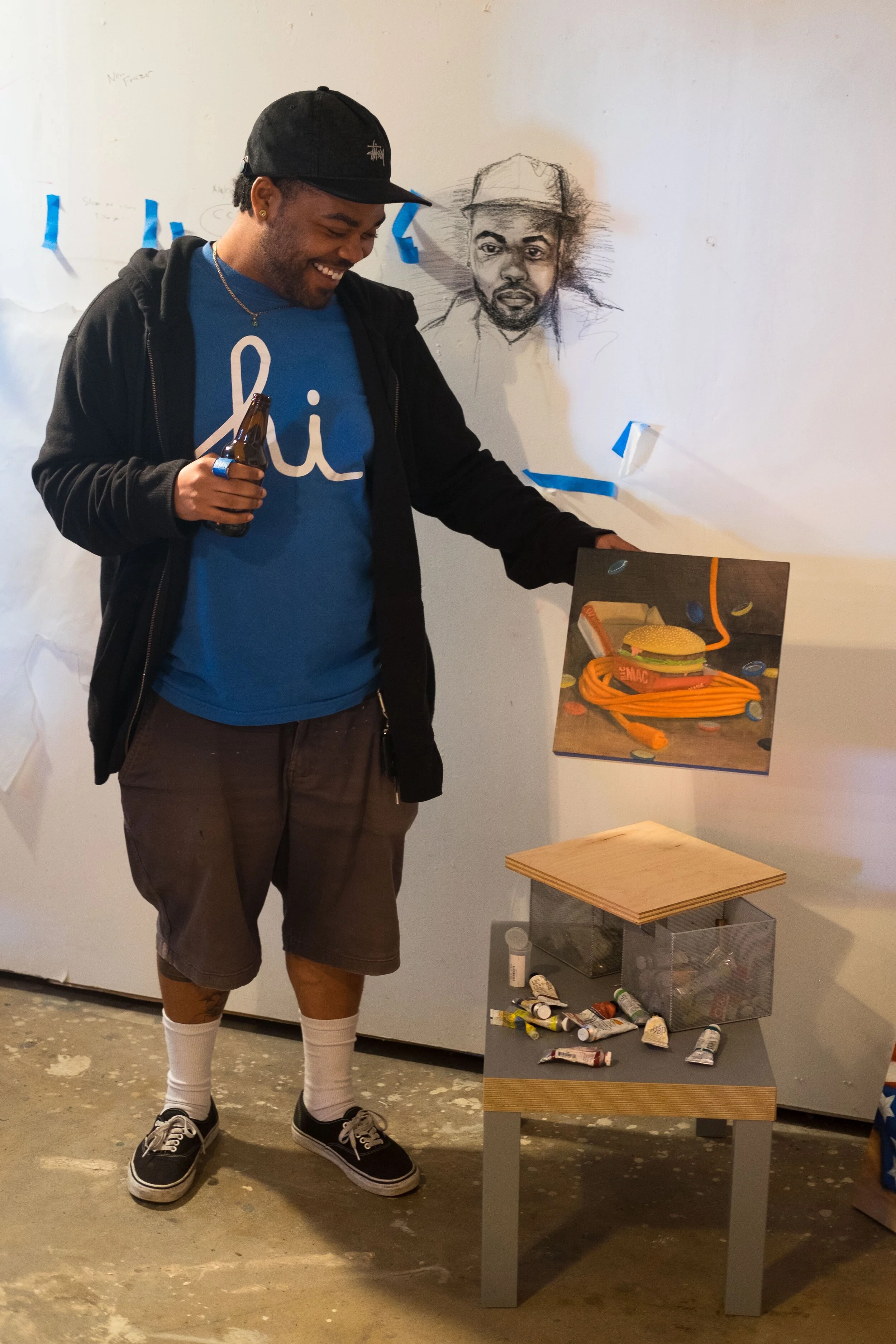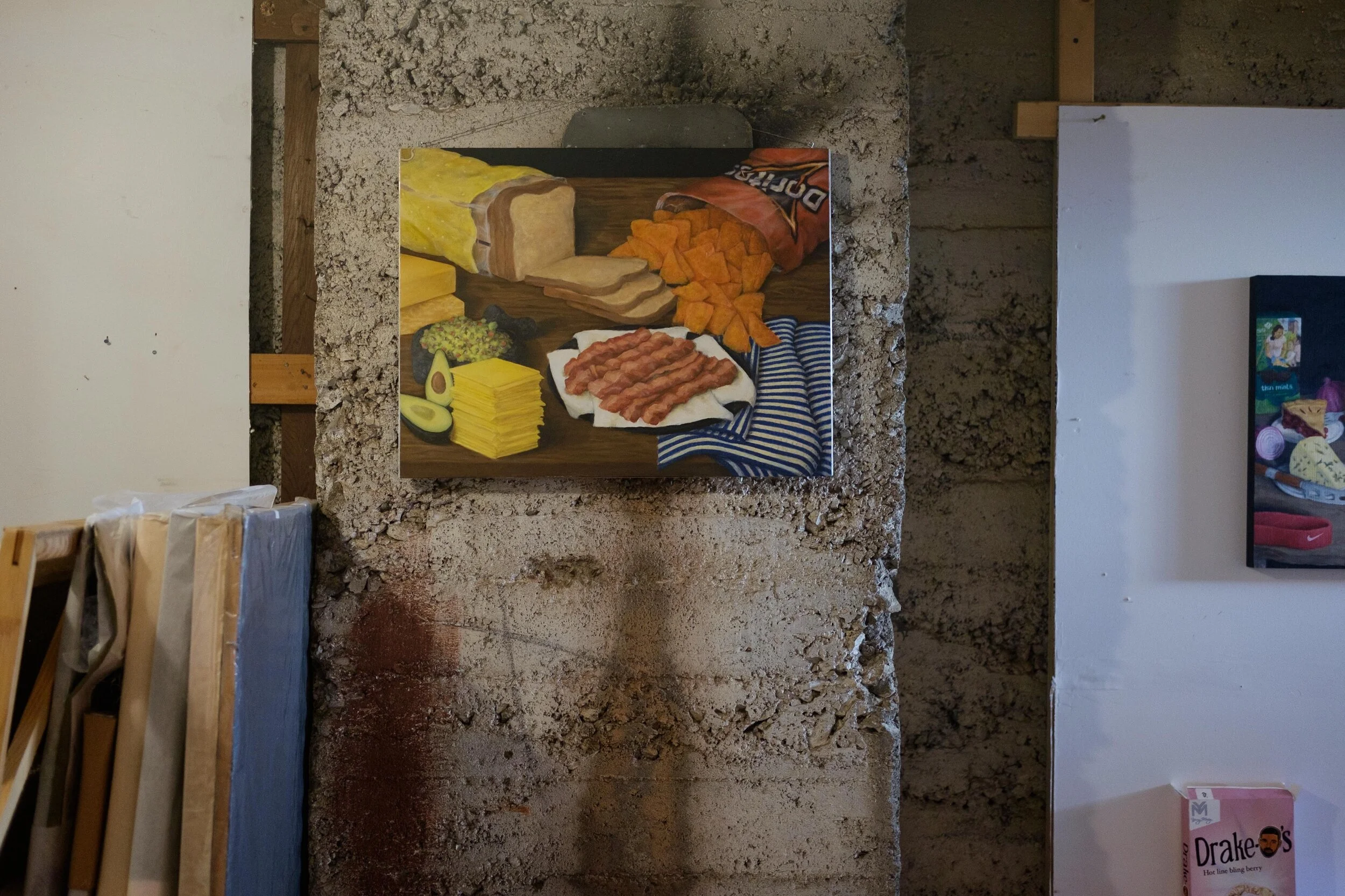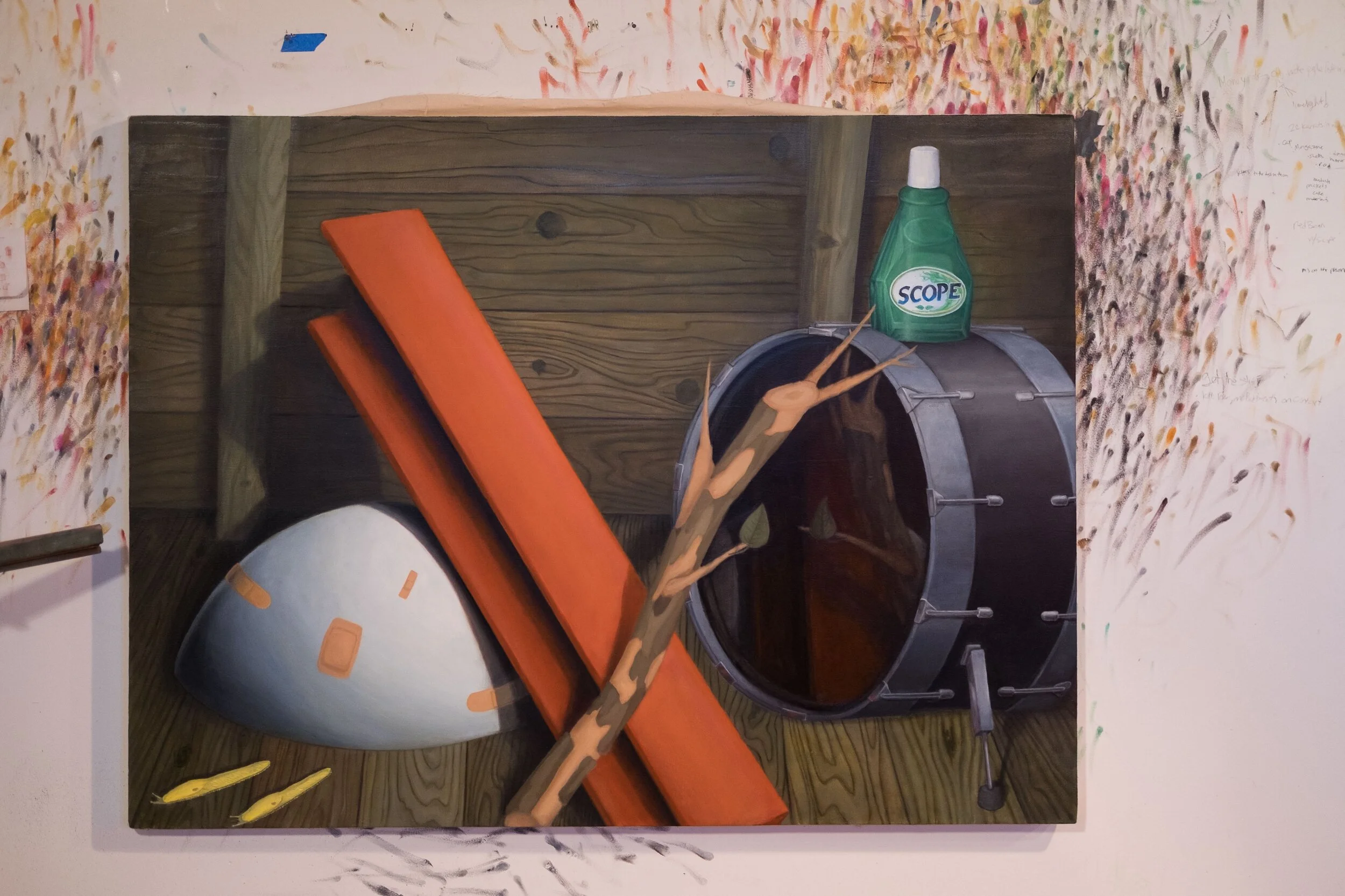Hip Hop and Painting Collide
A peeled but uneaten banana sits in a toaster. A bottle of mouthwash rests on a bass drum. Seashells, tools and snails share a tabletop. Welcome to the intriguing world of Troy Chew and his still life paintings.
Troy Chew in his studio
I got to visit Troy in his studio recently at the Headlands Center for the Arts, where he is a graduate fellow following his MFA at California College for the Arts last year. The setting highlights the intrigue of his paintings; daily objects reassembled in an unnatural manner, real objects seemingly removed from our reality. The Headlands Center for the Arts has a similar disassociation from reality for me — only twenty minutes from the chaos of San Francisco is such a place of peace and creation.
Word play on Troy’s studio wall
In fact, Troy’s paintings are not removed from reality, they show a different reality. The series Slanglauge transforms hip-hip lexicon into visual symbols, each painting is a complex exploration of gun violence, hustle for money and identity. Each painting is the result of sophisticated word-play, often using homographs as visual symbols. For example, in Draco Legislation, where snails and seashells are strewn across a table, a snail is a slug (a bullet) and a seashell is a shell (from a bullet).
Troy Chew, Draco Legislation, Oil on Wood, 2017, 20 x 26 inches
The more lighthearted paintings deal with hustle and an obsession with money rather than violence. In Eat young man, EAT, a breakfast spread sprawls across a table. Sliced bread points to the the meme-induced phrase “get that bread” which has swept that nation as a call to make money. More traditional is the bacon, as in “bring home the bacon.” Cheese is also slang for money, a reference to a time when those on welfare received cheese instead of cash. Troy’s commitment to his visual rendition of wordplay becomes apparent in this work, as hip hop often relies of images of affluence such as mansions and cars to portray wealth.
Eat young man, EAT, 2018
One of my favorite paintings, Keep the Heat feels even more of a non-sequitur. A banana, half-peeled has been pushed into one of the slots in a toaster. In front of it, two irons that probably won’t be used for clothing. In this case, the banana refers to a banana clip, the curved magazine in a lethal gun like an AK-47. Toasters and irons are also indicators of firearms. The three objects also allude to heat, as in packing heat, or carrying a gun. This overwhelming plethora of guns exists in contrasts to their domestic setting, a peaceful seeming kitchen rendered in calm light blue.
Troy Chew, Keep the Heat, Oil on Canvas, 28 x 22 in., 2018
The consequences of this plethora of guns is evident in I See You (ICU). A bottle of Scope mouthwash sits atop a bass drum. In this case, each is entirely removed from their normal context; the mouthwash is not in the bathroom, the bass drum has been removed from a drum set. The mouthwash on the bass drum becomes scope on the drum, a tool used to shoot with accurate precision. This precision is furthered by the red beam, a tell tale indicator of an imminent shot from a sniper rifle. The implications of these images startling, these guns are used to kill.
Troy Chew, I See You (ICU), Oil on Canvas, 36 x 48 in., 2019
References and allusions to guns are ubiquitous in Troy’s paintings, a reflection of their unfortunate status in American society. By rendering guns as recognizable objects of our quotidian lives, he has cleverly exposed the numbness and hopelessness we begin to feel at such a preponderance of unnecessary violence related to these weapons. They are present and everywhere, yet they do not belong; just as a banana doesn’t belong in a toaster, or mouthwash on a drum.




